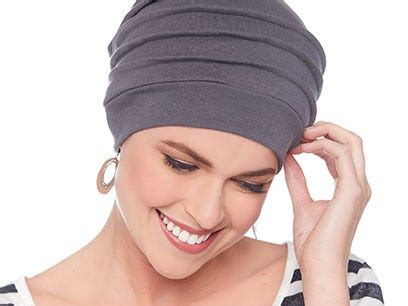Cancer treatment often results in hair loss, which can be a distressing experience for patients. Head covers offer a comforting and stylish solution, helping patients maintain their sense of identity and well-being during this challenging time.

Rising Numbers of Cancer Patients Require Head Covers
- Approximately 10 million new cancer cases are diagnosed annually worldwide.
- Hair loss is a common side effect of chemotherapy and radiation therapy, affecting over 60% of patients.
- The demand for head covers is increasing as the number of cancer patients continues to rise.
Types of Head Covers and Their Features
A wide range of head covers are available to suit individual preferences and needs.
1. Beanies
- Soft, comfortable, and versatile
- Come in various materials, including cotton, fleece, and silk
- Can be worn as a standalone cover or under scarves or wigs
2. Scarves
- Stylish and adaptable
- Can be tied or wrapped in multiple ways to create different looks
- Made from breathable fabrics like cotton, linen, or silk
3. Turbans
- Elegant and sophisticated
- Offer full head coverage
- Come in pre-tied and adjustable styles
4. Wigs
- Provide the most realistic hair replacement option
- Made from synthetic or human hair
- Require regular care and maintenance
Benefits of Head Covers for Cancer Patients
- Emotional Support: Head covers can boost confidence and self-esteem by concealing hair loss.
- Protection from the Elements: They shield the scalp from the sun, cold, and wind.
- Aesthetic Enhancement: Head covers can add color, texture, and style to an outfit.
- Practicality: They can absorb sweat and moisture, keeping the head dry and comfortable.
Choosing the Right Head Cover
Selecting the best head cover involves considering the following factors:
- Personal Comfort: Opt for fabrics that feel soft and non-irritating.
- Style: Choose a cover that complements your facial features and personal style.
- Treatment Type: Different treatments result in different levels of hair loss, so select a cover that provides appropriate coverage.
- Versatility: Consider covers that can be worn in different ways or easily removed for medical appointments.
New Innovations and Future Applications
Thermo-Regulating Head Covers:
- Designed with materials that absorb and release heat
- Maintain a comfortable head temperature during both hot and cold weather
Moisture-Wicking Head Covers:
- Made from fabrics that draw moisture away from the scalp
- Keep the head dry and comfortable during physical activity or warm weather
Customizable Head Covers:
- Allow patients to create personalized covers using their own designs
- Enhance the cover’s emotional and aesthetic value
Tables
| Head Cover Type | Features | Pros | Cons |
|---|---|---|---|
| Beanies | Soft, versatile, comfortable | Inexpensive, easy to wear | May not provide full coverage |
| Scarves | Stylish, adaptable | Breathable, can be tied in different ways | May require careful wrapping |
| Turbans | Elegant, sophisticated | Full coverage, pre-tied styles | Can be bulky |
| Wigs | Realistic hair replacement | Can boost confidence | Require regular maintenance |
| Material | Benefits | Drawbacks |
|---|---|---|
| Cotton | Soft, breathable, hypoallergenic | Can wrinkle easily |
| Fleece | Warm, comfortable, moisture-wicking | Can be bulky |
| Silk | Smooth, luxurious, protects hair | Can be expensive |
| Synthetic Hair | Affordable, durable, versatile | May look less natural |
| Factors to Consider When Choosing a Head Cover | Explanation |
|---|---|
| Comfort | Select fabrics that feel soft and non-irritating. |
| Style | Choose a cover that complements your facial features and personal style. |
| Treatment Type | Different treatments result in different levels of hair loss, so select a cover that provides appropriate coverage. |
| Versatility | Consider covers that can be worn in different ways or easily removed for medical appointments. |
| Tips and Tricks | Description |
|---|---|
| Experiment with different styles: Try on different types of head covers to find what suits you best. | |
| Accessorize with scarves or jewelry: Enhance the look of your head cover with accessories. | |
| Maximize coverage for cold weather: Wear a beanie or scarf under a hat for extra warmth. | |
| Protect your head from the sun: Wear head covers made from sun-protective fabrics. |
FAQs
1. Can I wear a head cover after all my hair has grown back?
Yes, head covers can provide protection and comfort even after hair has regrown.
2. Are head covers covered by insurance?
Some insurance policies may cover head covers as a medical expense. Consult with your provider for details.
3. How do I wash and care for my head cover?
Follow the care instructions provided by the manufacturer. Generally, hand-washing with mild detergent is recommended.
4. Are head covers available for men and children?
Yes, head covers are designed for both men and children who may experience hair loss.
5. Can I customize my head cover?
Some companies offer customizable head covers where you can choose the fabric, design, and fit.
6. Are there any alternatives to head covers?
Other options for hair loss include hair extensions, hair transplantation, and micro-pigmentation.
7. How can I find support for hair loss?
Cancer support organizations and online communities provide resources and support for people experiencing hair loss.
8. What are the latest trends in head covers?
New innovations include thermo-regulating, moisture-wicking, and customizable head covers.
